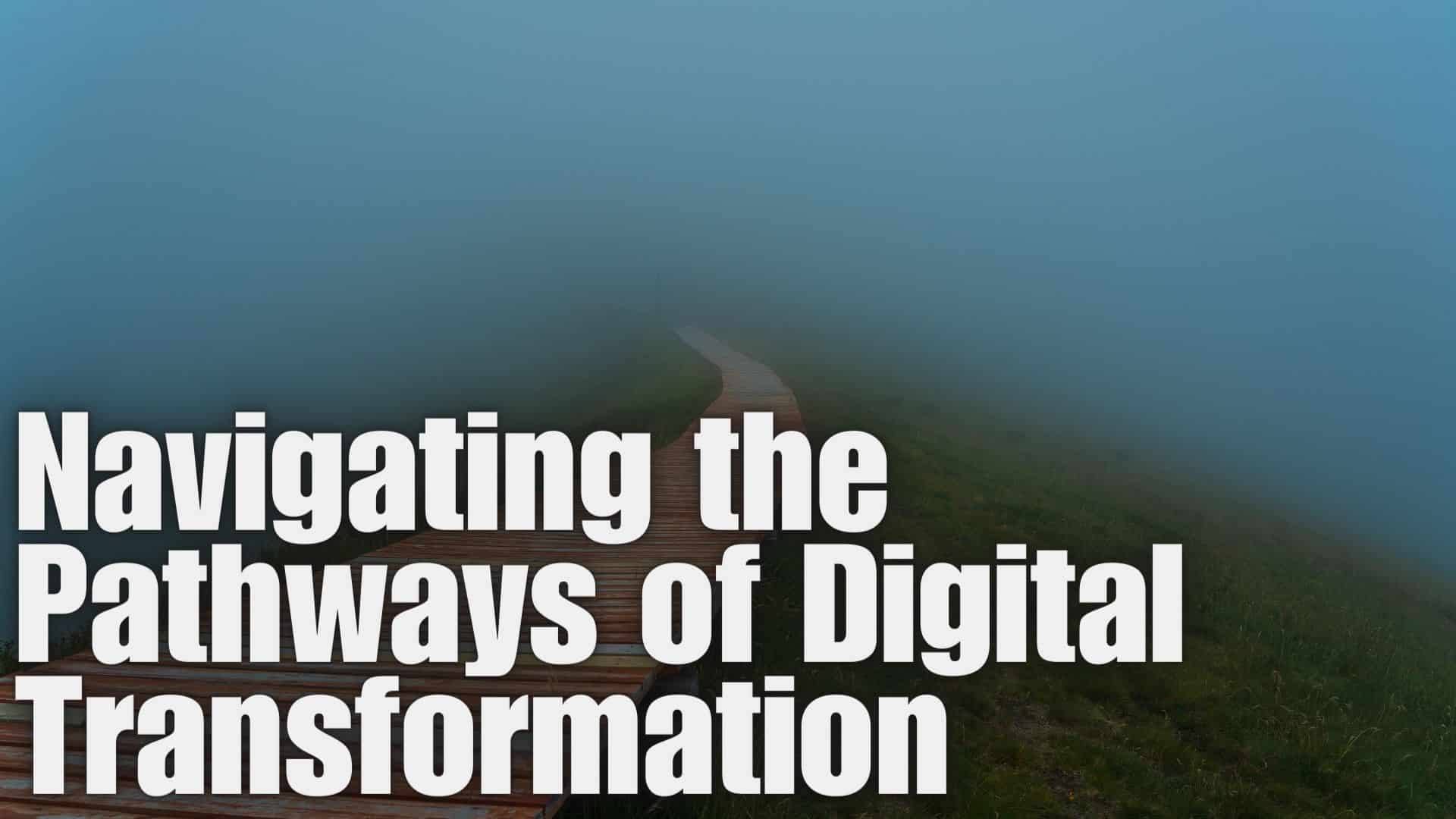-
Connect With Your Ottawa IT Service Company at (613) 828-1384
Connect With Your Ottawa IT Service Company at (613) 828-1384
As we forge ahead in the digital age, businesses must adapt or risk being left behind. What does this adaptation look like? At its core, it involves an undertaking known as digital transformation – a process that marries modern technology with existing business operations, culture, and customer experiences. It’s not simply about implementing new software or using social media; it’s a holistic change that pervades every layer of a business, pushing it to reevaluate its methods and strategies, thus driving it towards a more digital, customer-centric future. This evolution often leads to unprecedented growth and opens pathways into previously inaccessible industries.
The digital transformation journey is more of an expedition than a straight path, with various terrains to traverse. There are four major landscapes of focus: Process Transformation, Business Model Transformation, Domain Transformation, and Cultural/Organizational Transformation.

Exploring the Terrain of Process Transformation
Process Transformation is a strategic initiative that reviews and upgrades a company’s operations, aligning them with its goals. It’s like an expedition leader mapping the best route for the journey – the more effective the route, the more efficient the expedition.
A company must follow a well-defined path to embark on a successful process transformation. It begins with identifying the purpose of the transformation. Whether it’s to modernize systems, incorporate new technologies, or adapt to a new organizational structure, defining the objective sets the course of the journey.
Next, it’s vital to establish baseline metrics – your compass in this expedition. These metrics, which could include cost, time, or error rates, serve as benchmarks against which to measure the success of the transformation.
An inclusive approach is critical, involving all stakeholders – employees, customers, and other parties with a vested interest in the transformation. Their feedback can help create an ideal path for the transformation.
The journey then proceeds with a visual representation of the ideal workflow path, which aids in understanding the full scope of the transformation, identifying potential obstacles, and plotting the course around them.
The transformation is then gradually introduced, closely monitored, and swiftly tweaked. Like any expedition, adaptability is crucial in navigating the terrain of process transformation.
Navigating the Landscape of Business Model Transformation
In the digital age, businesses are using technology to enhance their existing models and to revolutionize them entirely. Companies like Netflix, Apple, and Uber have upended their respective industries by utilizing digital technology to create disruptive business models.
It’s not just tech giants, though. Companies in traditional sectors like insurance are leveraging technology to disrupt and innovate. These organizations can seize new growth opportunities by reinventing their business models, much like how an expedition seeks uncharted territories.
Venturing into the Realm of Domain Transformation
Domain Transformation, an area often overlooked, offers enormous potential. It represents the capability of technology to redefine products and services, blurring industry boundaries and creating space for non-traditional competitors. It’s akin to discovering a new land with untapped resources.
Amazon’s foray into cloud computing through Amazon Web Services (AWS) illustrates domain transformation. Although AWS was an unusual move, it has allowed Amazon to dominate a sector traditionally held by Microsoft and IBM. The takeaway here? When embarking on the digital transformation journey, keep an eye out for unexplored opportunities in domain transformation.
Ascending the Peak of Cultural/Organizational Digital Transformation
The last but arguably the most challenging terrain of digital transformation is cultural/organizational transformation. It’s not just about updating technology; it’s about aligning digital efforts with an organization’s internal values and behaviors.
A failure to harmonize these elements can result in slower adoption of digital technologies and loss of market competitiveness. In contrast, a comprehensive and collaborative effort can foster a culture that understands, embraces, and propels digital transformation.
Leadership plays a crucial role in this journey. They are the expedition guides, defining and communicating the vision effectively throughout the organization, highlighting the risks worth taking and why.
Digital transformation is an expedition, a long and challenging journey that takes a company from traditional business to the exciting new landscape of the digital world. It requires a thorough understanding of the terrain, an adaptable strategy, and a resilient and inclusive culture.
In this digital age, companies that understand and successfully navigate these four terrains of digital transformation will flourish, while those who fail to do so will inevitably falter. Let your journey begin!